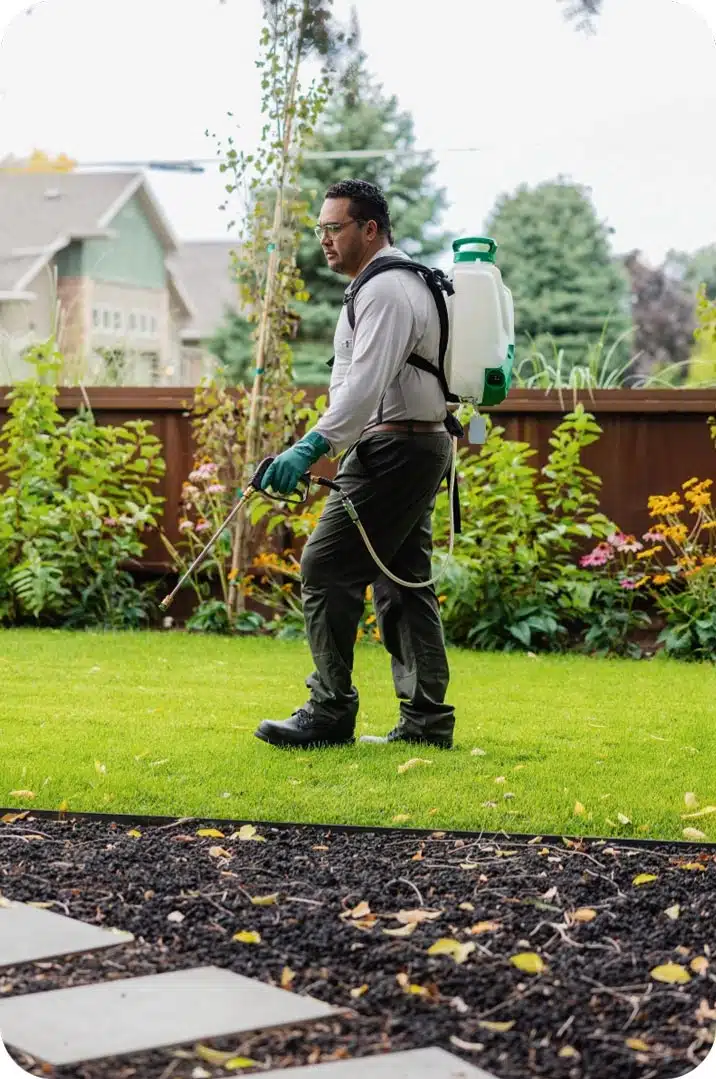A1 Pest Control Charlotte NC Bed Bugs - Expert Elimination Services
Wiki Article
Bed Pest Treatment Failure: Comparing Chemical Vs. Non-Chemical Solutions
In the realm of bug control, specifically when handling the consistent issue of bed pests, the option between chemical and non-chemical treatment remedies can be a pivotal one. Both techniques supply distinctive advantages and disadvantages, influencing factors such as effectiveness, safety and security factors to consider, and overall price. By analyzing the nuanced details of each approach, a more clear understanding of which course to go after in attending to a bed insect invasion can be obtained.Efficiency of Chemical Treatments
Chemical treatments for bed pest infestations have been commonly recognized for their quick and potent efficacy in getting rid of these insects. When thinking about the performance of chemical therapies, it is critical to comprehend that they can provide a extensive and quick remedy to a bed insect issue. Expert exterminators frequently count on insecticides to target bed insects at numerous stages of their life cycle, consisting of eggs, grownups, and fairies. These chemicals usually work by interfering with the bed pests' worried system, causing paralysis and eventual fatality.In addition, chemical treatments have the advantage of using recurring effects, suggesting that they can remain to get rid of bed insects even after the first application. This recurring action is specifically advantageous in combating any kind of possible re-infestations. Additionally, the quick activity of chemical therapies can bring relief to people encountering extreme bed bug invasions, permitting them to restore control of their living rooms promptly.
Safety And Security Worry About Chemical Solutions
One important element that needs mindful consideration when using chemical services for bed pest therapy is making sure the safety and security of residents and the atmosphere. Direct exposure to certain chemicals utilized in bed bug therapies can lead to respiratory system issues, skin irritability, or other adverse responses, particularly in individuals with pre-existing conditions or sensitivities.Moreover, the ecological effect of chemical remedies is one more considerable consideration. Some pesticides utilized in bed pest therapies may be unsafe to helpful bugs, wildlife, and ecological communities if they seep into the soil or water supply. It is necessary to use chemical treatments carefully, following safety and security standards, and taking into consideration less toxic choices to minimize these threats and guarantee the reliable and risk-free administration of bed pest problems.
Benefits of Non-Chemical Strategies
Taking into consideration the prospective safety problems and ecological influence connected with chemical services for bed pest treatment, discovering non-chemical methods provides an appealing choice with numerous distinct advantages. Non-chemical methods offer a much safer option for households, especially those with pets, youngsters, or individuals sensitive to extreme chemicals. These approaches get rid of the threats of direct exposure to toxic compounds, reducing the possibility for negative pest control definition health effects. In addition, non-chemical treatments are eco pleasant, as they do not add to air or water pollution, making them a sustainable option for pest control.In addition, non-chemical options can be effective in targeting bed pests, including hard-to-reach areas where chemical treatments may not pass through - A1 bed bug exterminator charlotte. Methods such as warm therapy, vacuuming, steam cleaning, and mattress encasements give complete obliteration without the use of harmful chemicals.
Limitations of Non-Chemical Treatments

Additionally, non-chemical therapies commonly require numerous applications to accomplish effective eradication. This can be lengthy and might not constantly ensure full elimination of all bed pests and their eggs, specifically in covert or hard-to-reach places.
Moreover, the success of non-chemical treatments greatly depends on correct implementation and thoroughness, which can be testing for people without expert experience. Insufficient application of non-chemical methods may cause insufficient removal, leading to relentless infestations and the requirement for added treatments.
Consequently, while non-chemical therapies have their benefits, it is necessary to recognize these constraints and consider them when identifying one of the most effective approach for managing bed insect invasions.
Expense Comparison: Chemical Vs. Non-Chemical Options
Offered the restrictions connected with non-chemical therapies, an important facet to assess in the context of bed insect management is the cost contrast between chemical and non-chemical alternatives. Chemical therapies generally include the application of insecticides by experts, which can vary from $250 to $900 per space, depending click here now upon the seriousness of the invasion and the dimension of the area to be treated. On the other hand, non-chemical therapies like heat therapy or steam can be extra pricey, with expenses ranging from $1,000 click resources to $6,000 for an entire home. While the first cost of chemical therapies may seem lower, several therapies might be called for to fully eliminate the invasion, possibly raising the general cost. On the various other hand, non-chemical choices may supply an extra lasting and eco-friendly service, although they can be cost-prohibitive for some people. Ultimately, when taking into consideration the price of bed bug treatment alternatives, it is necessary to evaluate the upfront costs versus the effectiveness and long-term sustainability of the picked technique.Final Thought

Considering the possible safety concerns and ecological effect connected with chemical solutions for bed bug therapy, discovering non-chemical approaches presents an encouraging option with numerous distinct advantages.Provided the limitations linked with non-chemical treatments, an important aspect to examine in the context of bed bug administration is the price contrast in between chemical and non-chemical alternatives. In comparison, non-chemical treatments like warmth treatment or heavy steam can be much more pricey, with expenses varying from $1,000 to $6,000 for a whole home. While the initial price of chemical treatments might appear lower, several therapies may be called for to totally remove the infestation, potentially enhancing the general cost.In final thought, when contrasting chemical and non-chemical bed pest therapy alternatives, it is important to take into consideration effectiveness, security, advantages, restrictions, and expense.
Report this wiki page